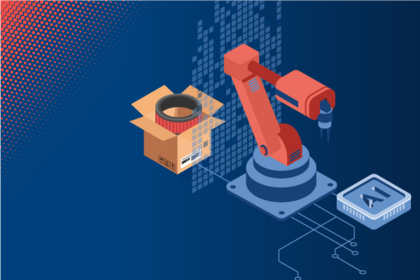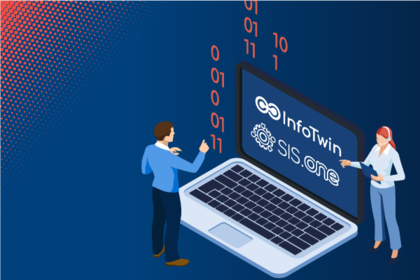Collaboration - Part 2: Teamwork as a Revenue Driver - 5 Benefits for your Service
Digitalization, the shortage of skilled workers, working from home — the transformation of the working world is in full swing. Significant changes in everyday working life are already apparent. They can be seen today in the way employees work together and how knowledge is transferred within companies, for example. Here you can find out what advantages these changes bring to machine and plant manufacturers when they use digital tools in their aftersales business operations.

Collaboration and knowledge transfer in changing times
Before companies embraced new work, artificial intelligence, cloud software, digitalization and similar trends, most companies were organized hierarchically. Information and knowledge were passed on from the top down.
Knowledge sharing took place mainly between colleagues within a department. As a result, the experience and knowledge gained by employees remained inside the company for a long time, because frequent job changes were not the rule.
Modern collaboration thrives on flexibility
Today, the dynamics are completely different:
- Even career starters can list numerous positions and experiences in several companies on their resumes.
- Young people who are now starting their working lives are experiencing an agile working world in which the boundaries between individual teams are blurring.
- Modern work is characterized by fluctuation, part-time models, methods such as Scrum and, above all, digital work tools.
- Communication and knowledge sharing no longer function from the top down. Instead, they are networked, cross-team, real-time, and dynamic.
However, it is becoming increasingly difficult to retain and utilize the knowledge of older colleagues in a company. Most importantly, there is a shortage of successors who can learn from the experienced professionals before they retire. And there is also a shortage of tools to manage this knowledge and use it collaboratively.
In addition, many job descriptions are changing because of demographic change and digitalization. For example, service technicians are now expected not only to solve individual problems but also to take a holistic view of processes and optimize them. This far-reaching transformation presents companies with enormous challenges.
The benefits of digital collaboration in aftersales service
In the first part of our series of articles, we looked at the connection between collaboration and knowledge transfer and established the fact that networked collaboration and the smart management of knowledge are the basis of resilience in companies.
One important tool for achieving this goal is a modern service information system. It enables valuable aftersales knowledge to be bundled and used throughout the company. But what concrete added value does this bring for aftersales employees? Here is a summary of the five most important benefits.
1. Strengthening aftersales as an interface
As collaboration in a company becomes more agile and decentralized through employees who work from home as well as remote services, the networking of employees, processes, and information has become more important than ever. Digital tools enable this new type of collaboration. They facilitate coordination between departments and knowledge sharing.
If aftersales knowledge can be successfully integrated into these new processes, the entire company will benefit. The aftersales department is an important link to a manufacturers’ customers, but that’s not all. It also serves as an information interface to internal departments such as sales and production, which can use aftersales data to optimize their own processes.
2. More transparency for everyone
Process optimization requires transparent data. In aftersales, transparency is created when information from other systems such as ERP software is accessible to service employees. Conversely, transparency for the company arises when aftersales data flows into such systems.
This gives service technicians and all other departments an overview of
- Service orders
- Typical sources of faults in machines and components
- Spare parts that are ordered especially often
3. Simple planning
In addition to company-wide data utilization, tool-based collaboration also simplifies the planning and coordination of aftersales tasks. A service technician no longer has to spend hours searching through e-mails and paper catalogs for information before devoting himself to a new order — he can find it in the service information system with just a few clicks.
4. Teams are more efficient, flexible, and satisfied
A central knowledge and data platform that all employees can access across departments promotes the flow of information. This enables technicians to perform their tasks more efficiently and save time. As a result, they deliver first-class service.
For service staff, decentralized working has been a reality even before the home office boom. However, with the help of modern aftersales tools and trends such as augmented reality, they can work not only decentrally but also more flexibly. As a result, they can now provide even better assistance to those customers who operate remote or hard-to-reach plants.
5. Greater customer satisfaction
When the internal processes at machine and plant manufacturers run smoothly, this pleases not only the service staff but also the customers:
- Customers receive targeted support faster if a component in their plant fails.
- Delivery bottlenecks and waiting times are avoided, because the logistics team knows which spare parts are in particularly high demand.
- Solutions for end customers are found faster and spare parts are identified accurately, because service technicians can access all of the relevant information immediately and easily.
- Digital collaboration tools thus not only make the work of the service staff easier but also increase the first time fix rate — and thus enhance customer satisfaction.
What are the disadvantages and challenges of collaboration?
For all the advantages that collaboration and the networking of knowledge in the company offer, there are also challenges:
- Acceptance: Older colleagues in particular, whose wealth of knowledge is especially valuable due to demographic change, must be convinced of the value of modern collaboration. It is important to involve them and all the other employees in the change at an early stage. Intuitive solutions that fit seamlessly into employees' everyday lives are also conducive to acceptance.
- The human factor: Interpersonal communication takes a back seat when service technicians draw their knowledge from tools instead of sharing information via e-mail or in conversation with colleagues. That's why it's important to foster a corporate culture and provide opportunities for face-to-face meetings despite remote work.
- The knowledge base: In order to network knowledge inside the company and make it usable, a foundation for it must first be created. Both the know-how of newcomers and the older colleagues’ wealth of experience must be incorporated into the knowledge base. Companies that start now to consolidate both of these sources of knowledge in-house will protect themselves from the loss of knowledge that accompanies fluctuation and demographic change.
Networked collaboration and communication simplify cooperation between support staff and service technicians and also increase transparency for other departments, thus offering effective levers for optimization.
In the third part of this series of articles, you will learn about important strategies that will enable your company to benefit from this new type of collaboration.




